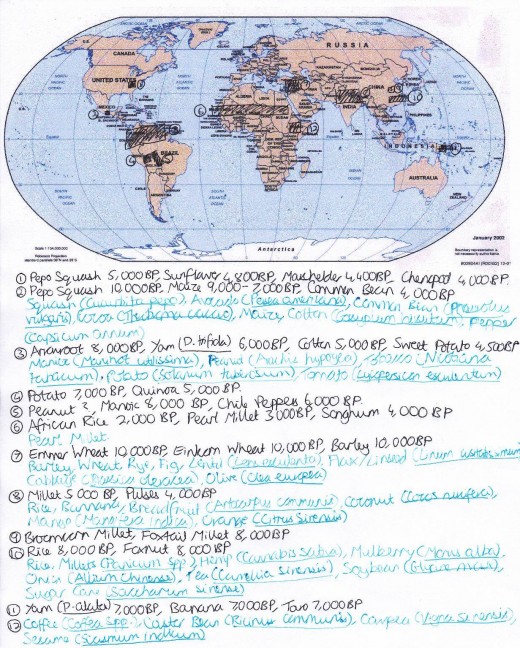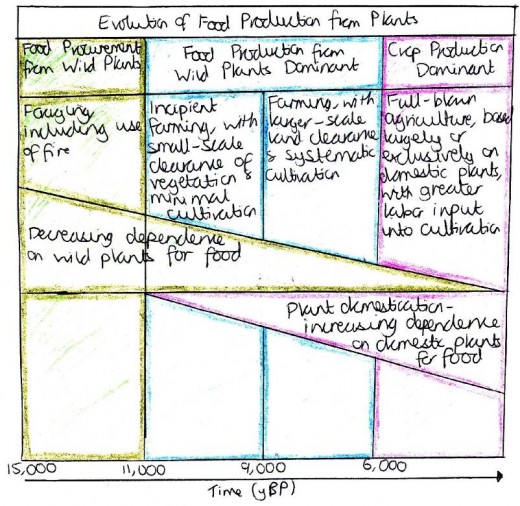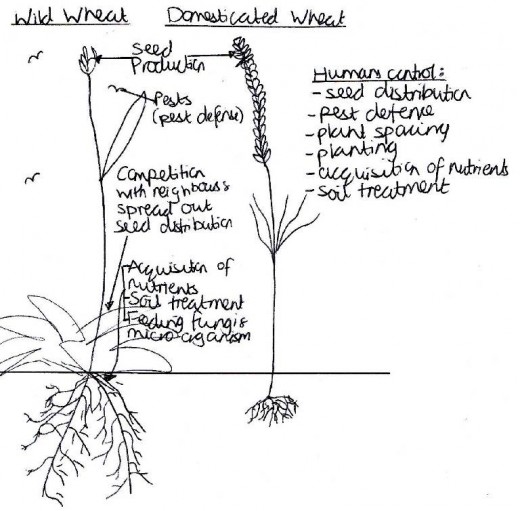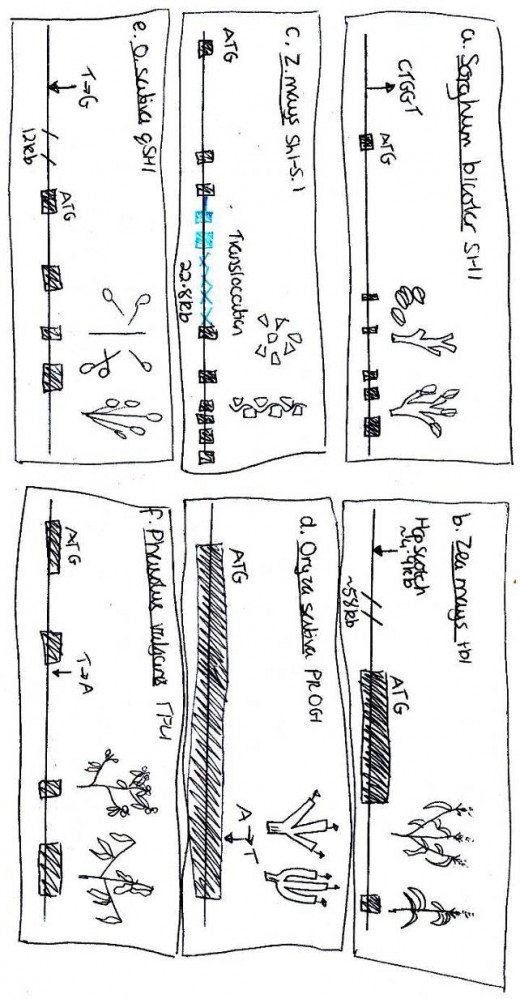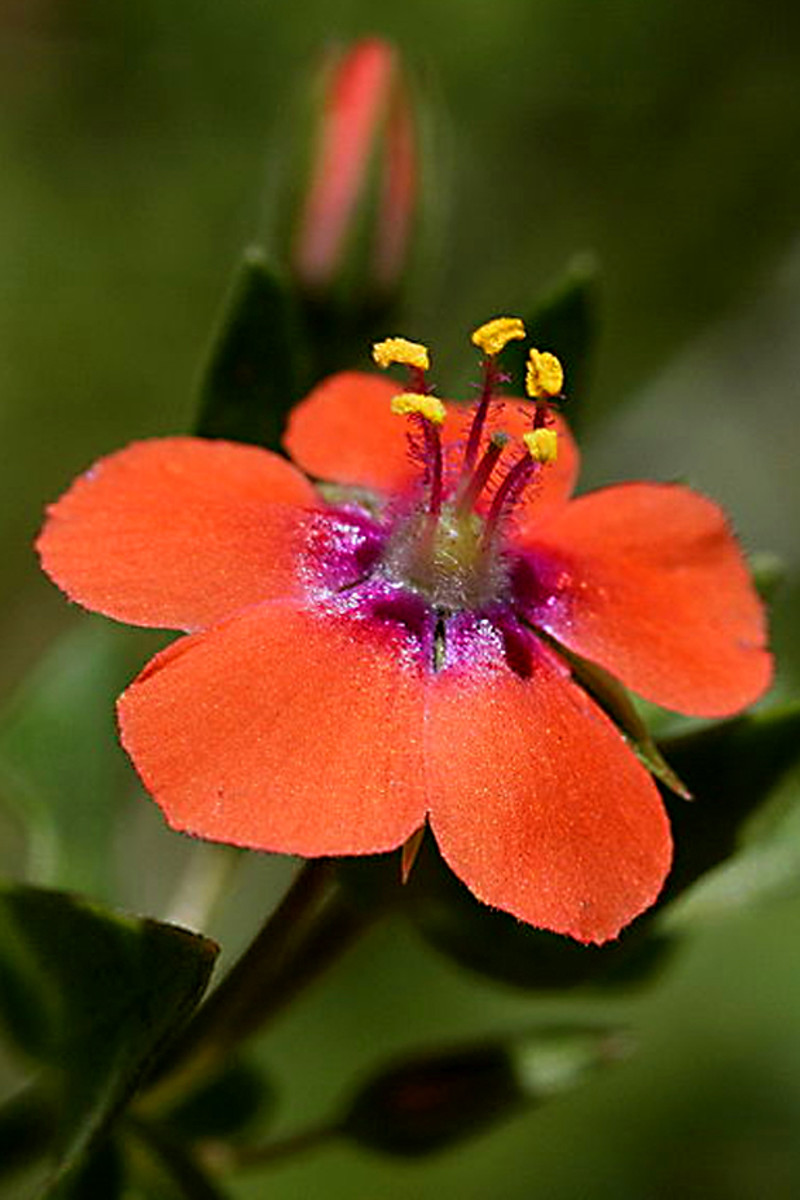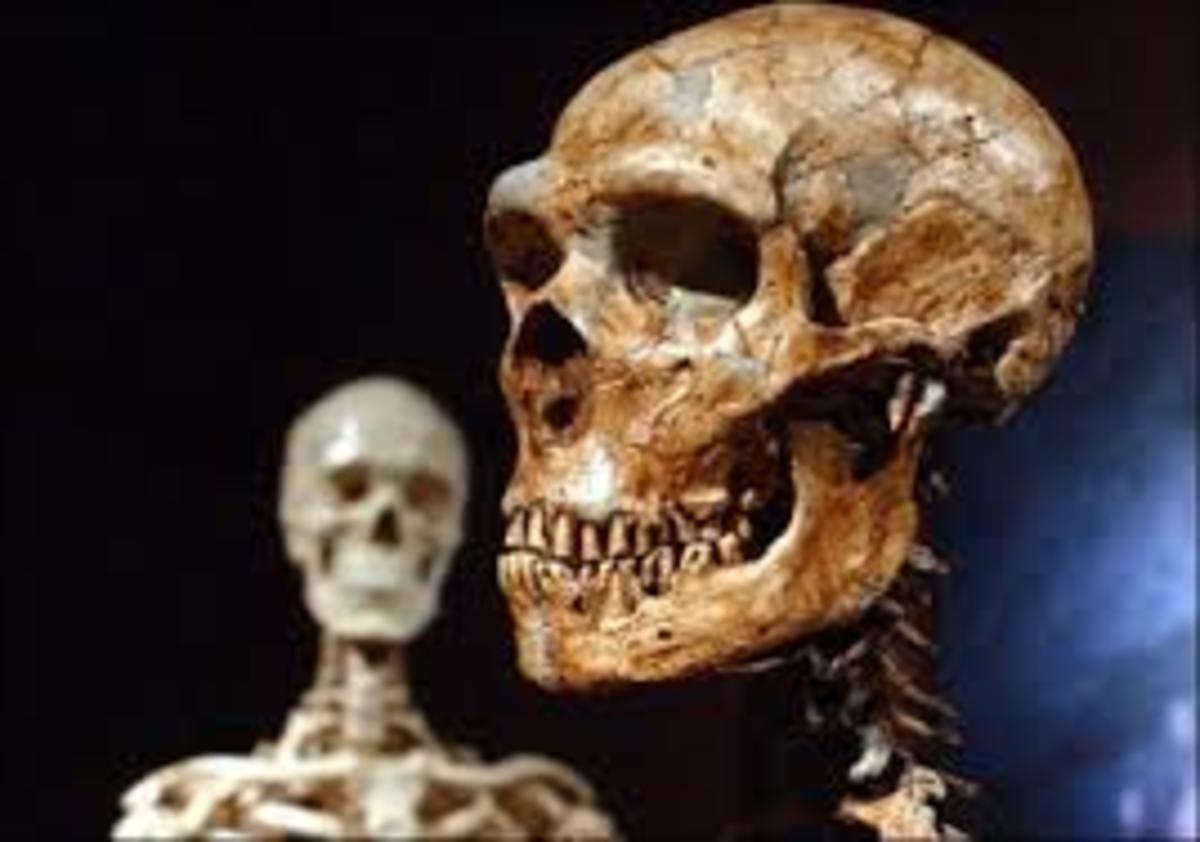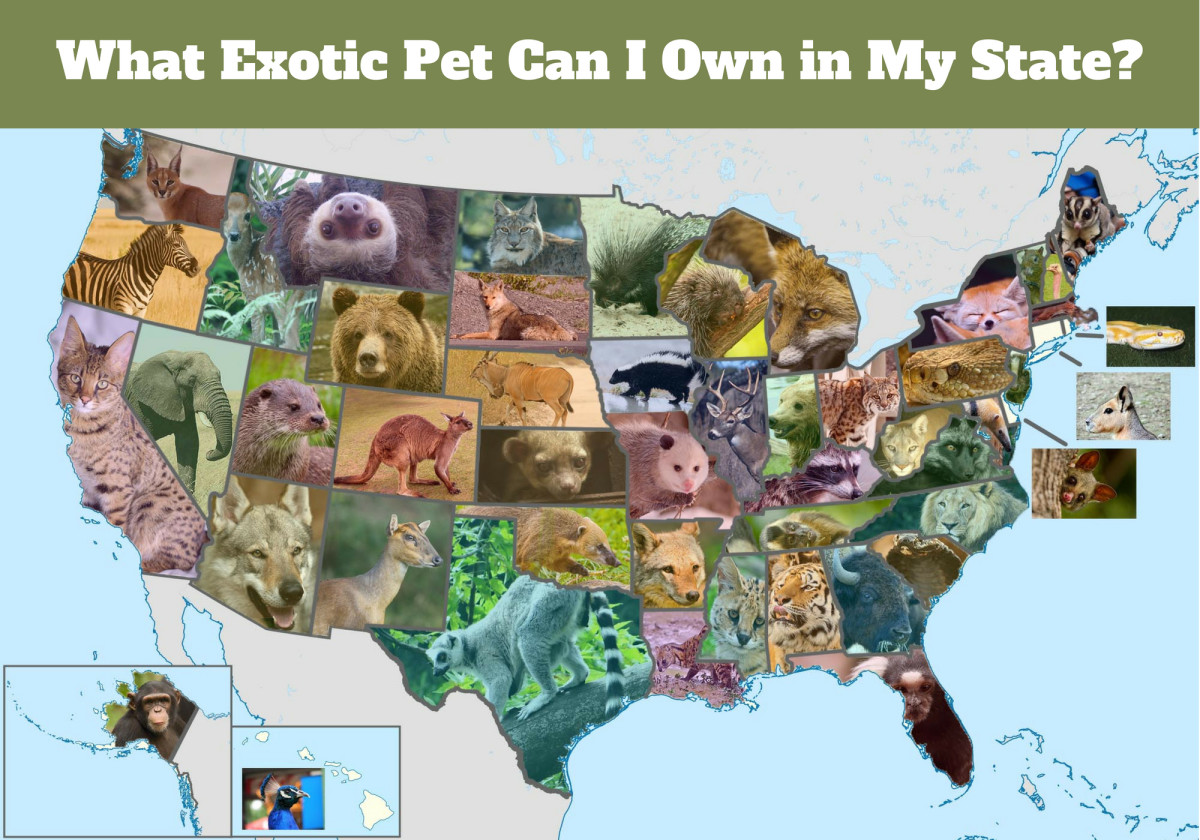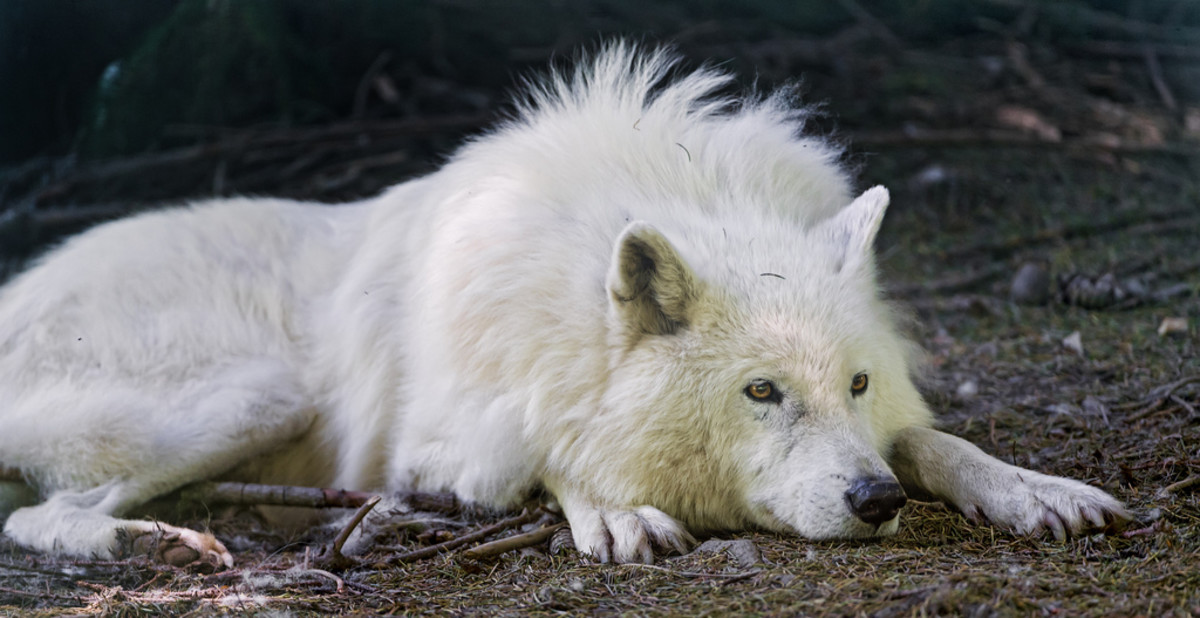Plant Domestication
A Description of Plant Domestication
Domestication is when a species has been modified by humans, for example in terms of genetics and behaviour. The survival of some plants was purely due to humans. An example of this is Sinskaja’s (1928) study of hemp (Cannabis sativa). The plant first grew only in the wild but then moved from wild centres to areas populated by humans. This is because to grow, it requires rich fertilised soil. Thus, it often grew around the camps of the nomads in the Atari, where cattle enriched the soils in winter. Eventually, the hemp began to be used by the humans and was later cultivated (Ucko and Dimbleby, 2007).
It also must be considered that not all plant species exist solely due to human interest in the, leading to their subsequent domestication. One such example of this are weeds. Weeds could potentially be described as the only true wild plants today. They are still usually aggressive species which will out-compete their domesticated competitors.
Figure 1: Major Centres of Domestication and Dates for Earliest Plants (and Origins)
Click thumbnail to view full-size
Figure 2: Evolution of Food Production from Plants
Click thumbnail to view full-size
Figure 3: The Differences between Wild and Domesticated Wheat.
Click thumbnail to view full-size
Historical Account of Plant Domestication
As Sakuma et al. (2011) said, “The process of crop domestication began 10,000 years ago in the transition of early humans from hunter/gatherers to pastoralists/farmers.” Harlan and de Wet (1965) showed that certain families of plants were highly important and contributed to many of the major crops of today, for example the Gramineae (the grasses) and the Leguminosae (the beans, peas etc.). Major crops are especially important because 60% of the calories consumed in the world are from rice, wheat and maize.
Candolle (1886) stated that “Agriculture came originally, at least so far as the principle species are concerned, from three great regions… which had no communication with each other” [Figure 1]. These three regions which are being described are: South and East Asia, the Middle East and Mesoamerica.
South and East Asia
One such region is South and East Asia, where rice (Oryza species), millet (Panicum miliaceum) and soybean (Glycine max) appear to have been first domesticated [Figure 1].
The earliest evidence of rice consumption dates back to between 12,000 and 16,000 year ago in The Yuchanyan Cave in the Human Province of China (Oka, 2012). The grains found appear to be domesticated species because they contain traits of both Oryza sativa and O. japonica. However, it could be that these grains were used to temper pottery, rather than for consumption.
The origin of the rice species O. sativa japonica in China was from the wild plant O. rufipogon. The wild plant differs from the domesticated species in that it has a much lower yield of rice. It also required highly swampy areas to grow, thus domestication must have involved a significant amount of trial and error of harvesting conditions and environments.
Trial and error was an important aspect of plant domestication, throughout the world. Lots of beans (such as kidney beans) contained toxic alkaloids which needed to be soaked out before consumption and tasted bitter. Similarly, wild potatoes in the family Solenacece, from the Andes, were highly toxic until a natural mutation occurred which humans were able to exploit, allowing them to propagate the potatoes and utilise their rich storage of starch. There are also many different ways of sowing plants and each plant has its own optimum method, such as whether it is necessary to bury the plant. It was also important to be knowledgeable about what plants or parts of a plant were edible. This sort of information was transmitted between and within groups of humans.
Millet species appear to have had the same origin as rice but are from North China and so are more adapted to the dry, cool climate rather than the wet, warmer climate of the South. They are small grains that are easily digested, high in minerals and can be used to make porridge or bread. Today, the primary usage of millet is for bird seed, however it can also be as a replacement for buckwheat, quinoa or rice.
Broomcorn millet seems to have been first domesticated in the Yellow River Valley roughly 8,000 BP, although it is not yet certain what the ancestral form of the plant was. The crop was used by hunter-gatherers in China approximately 10,000 years ago but it did not become a dominant crop until the Middle Neolithic.
Soybeans, however, were established later than this. Comparisons of 949 soybean samples from 22 sites in northern China, Japan and South Korea found that they were first domesticated 5,500 year ago (much earlier than the previously believed 3,000 years ago) from wild-type small-seeded soybeans which have existed since around 9,000 years ago. This formed the two main types (G. max and G. ussuriensis), which, according to cytogenetic evidence, originate from the same species. The functions of these species today include: food for livestock, cooking oil, tofu, tempeh and soy milk, (Lee et al., 2011).
Middle East
The Kembaram culture 23,000 year ago built shelters for the storage of grasses and grains. They managed plants and were a precursor in farming. They also relied on: fruits, berries, woodland and medium herbivores.
There is evidence that this storage of crops was continuing 11,000 years ago in the Jordan Valley (Kuijt and Finlayson, 2009). The people made silos to store food, such as grain, to use as an insurance policy against food shortages. At this time, these humans were ‘locked’ into a farming way of life, because their populations were too great to rely on hunting and the males were unable to leave the crops to hunt animals [Figure 2]. It began due to the climate becoming warmer, making crop productivity increase. This allowed for crops such as barley (Hordeum vulgare ssp. Vulgare ) to grow more efficiently, due to human selection, from wild species (such as H. vulgare ssp. Spontaneum).
This was also the time period when Einkorn (Triticum monococcum) and Emmer (T. dicoccum) wheat were domesticated in the Karacadag mountain region of South-East Turkey. These species, after much domestication, formed the two most commonly eaten species in the world today. Bread wheat (T. aestivum) is 95% of all consumed wheat in the world, when Hard wheat (T. turgidum) accounts for the other 5% in pasta-based products [Figure 3].
Wheat, rye and other planted cereals were grown 13,000 years ago by Northern groups of Homo sapiens because of a mini ice age that occurred, causing the climate to change (even if there was no actual ice in the Middle East). The woodlands were replaced by grass lands dominated by monocot grasses (such as cereals). Those grasses with the largest seeds were of the greatest importance because they were large enough for humans to grind with their teeth, but they could also be processed to make porridge and wheat. They were also able to be stored long term, which was especially useful for the winter months. However, humans had to protect these crops because they were easily out-competed by more arid-tolerant grasses, such as vetches. Thus, the humans used irrigation to increase the survival of these important crops, diverting rivers with ditches, moving villages to be in close proximity to a water source or planting the crops near rivers. This is likely to have occurred due to the evidence of crop irrigation explored by Hillman et al. (2001) from the site of Abu Hureyra in North Syria.
It was important for the people of Abu Hureyra to protect their crops because they selected for certain desirable traits in these crops and wished to promote the survival of these bred crops. They discovered a mutation in rye seeds which caused them to have a larger seed size, meaning that the individuals which had this mutation in their genome would contain more food and nutrients. This was found to be an inherited trait and was able to be manipulated due to human selection and breeding, even though this trait was a non-optimal seed size for the environment (in Darwinian terms). This is because these faster-growing crops were more attractive to herbivores and caused stalk bending. To solve this new problem and prevent stalk bending, seed shattering had to be delayed. This meant that the grains that were more strongly attached to the stems in the abscission zone were selected for. This provided a further advantage to the humans, in that the whole stalk could be collected with a scythe and then threshed, preventing fewer seeds to be lost during harvesting. This process was also independently developed in China in the Far East, with the collection of rice. However, this too would have put these crops at a disadvantage without human protection because it made them more desirable to herbivores, meaning they could be easily outcompeted by other plants. Therefore, the people of Abu Hureyra also did aggressive environmental management, weeding any competing vegetation. Once these grasses began growing well and becoming lush, the crops had to be protected from their natural predators (for example, herbivores) by adding fences, creating a domesticated landscape [Figure 3].
Mesoamerica
The people of Abu Hureyra were not the only ones to do aggressive environmental management leading to a domesticated environment. Humans actually began to modify their environment 50,000 years ago, making them non-wild habitats. The Kumeyaay people 10,000 years ago in San Diego County burned areas of chaparral grassland to make the grass lusher to attract wild deer. The people also burned tree groves to provide a greater fruit yield from the trees. They also re-sowed some of the edible seeds they had harvested from wild grasses, to ensure there would be enough vegetation for them to eat in the next season. Groves of wild oaks and pines were also maintained in high altitude areas by the people, so they would be able to consume their nuts, which were rich in oils.
The coast was also exploited by the Kumeyaay people. They planted desert palms, mesquite and fruit-bearing plants, such as agave, wild grapes and yucca. The people would then migrate to this area when these plants were in season, aided by the cacti they planted around trails as a source of emergency water.
The Paiute Tribe of the Owens Valley also did a similar thing before the 1950s, by growing hyacinth, root crops and nut grasses in lowland areas. They planted the edible seeds, keeping the area marshy purposely by damming the river, in an attempt to promote the growth of these species. In autumn they would move higher up and harvest pine nuts for their oil because they are able to survive in high altitude areas. They would help these trees survive by felling any competing vegetation (harrowing) and chasing away any natural consumers (the herbivores) of thee crops. They also utilised rose hips as a source of vitamin C.
Another important way of survival in the Mesoamericas was a process called the Milpa system. The system was established to supply people with a sound assortment of essential nutrients and calories (Murphy, 2007). The Milpa are fields that contain a trinity of crops (Phaesolus beans, maize and squash). These three crops were specifically chosen for their combined benefits. For example, maize has high levels of carbohydrates (for energy), methionine (an intermediate in the biosynthesis of phospholipids) and oils (for fat as an energy store) but low levels of the essential amino acids lysine and tryptophan. Beans have low levels of cyesine and methonone but they are protein-rich (for growth and repair) with high levels of lysine and tryptophan (for protein and the vitamin niacin production). Squash has high level of carbohydrates, protein and numerous vitamins. Another advantage of this trinity is that these crops have large genetic diversity. This means that if one crop gets affected by a disease, the other crops are more likely to survive.
Figure 4: Types of Mutations in Crop Domestication and Diversification Genes.
Click thumbnail to view full-size
The Genetics of Domestication Syndrome Traits and Gene Linkage
Domestic Syndrome Traits
These centres of origin showed how crop domestication has occurred independently in these different areas (Middle East, South and East Asia and Mesoamerica), yet they show similar characteristics and the crops have similar traits.
Although it is evident that human intervention caused plant domestication, due to the traits which crops present today, other factors to seem to have contributed. Plant traits seem to have actually have been altered due to an amalgamation of genetics, environmental factors and deliberate human intervention.
Plants are able to be domesticated in this way because of the composition of the plant genome [Figure 4]. It has a very fluid structure so DNA fragments are able to enter and exit the genome at different rates. They are normally polyploidy also, meaning that it has extraneous DNA that do not encode proteins and creates variation. This explains why monocot genomes have a high diversity, ranging from 400Mb to 123,000Mb. Similarly, plants that are allotetraploids have high variation in their genome because their genome has the variation from two different individuals. However, those plants that are autopolyploidy have decreased variation in their genomes because they contain almost the same genome as their parent plant and it has only been duplicated.
Fuller (2007) defined the domestication syndrome as being “those traits by which domesticated plants differ from wild relatives”. Thus, they are the collection of traits that convert organisms from being wild to being domesticated. These traits are those which have been selected for cultivation, for example: seed size, reduced toxins, synchronised flowering and fruiting and the loss of natural seed dispersal. These are genetic traits that are sometimes controlled by one master gene or by only a few genes. An example of this is seed shattering, which is controlled by only one gene. The master gene is normally a transcription factor, which are proteins that bind to DNA, initiating the other genes. This means that when switched on, they cause multiple genes to be switched on also, all of which regulate one particular gene. These genes are not necessarily on the same chromosome, meaning that they can act as simple traits. Some traits, however, are controlled by many genes, such as synchronous seed sets, meaning that they are quantitative traits.
An example of the most morphological divergence from the original plant is in that of maize. Maize (Zea mays) was domesticated from the plant teosinte (Zea mays spp. parviglumis) in Central America 9,000 years ago. The differences between the wild and domesticated species are that in the wild-type, the seeds have hard shells with spikes that cause the shattering for its dispersal. In domesticated species of maize, there are kernels connected to a cob, covered by husks. Also, there are differences in the plant architecture. In modern maize, there is a single stalk and ear per plant when in teosinte there were many tillers, along with many inflorescences. This was due to the teosinte branched 1 (tb1) gene.
There are two theories about the increase in maize in our diets. The Teosinte Model states that maize occurred due to a mutation in the genetics of teosinte in Guatemala lowlands. The Hybrid Origin Model said maize originated in the highlands of Mexico. There is, however, evidence of starch grains in Panama at 7,800-7,000, suggesting that maize was used in the area. The maize then was spread from Mexico through trade lines, for example, there is evidence of maize being present in the southwest and east of the United States 3200 and 2100 years ago and in the Canadian Shield in 700 AD. At this time, certain desirable traits were purposely selected for.
Genetic Linkage
Genetic linkage is the name given to two or more phenotypes whose encoding genes are on the same chromosome and near each other. This means that when one individual phenotype is selectively bred for, the other phenotype is also inadvertently selected for. This happens because it is unlikely that the two alleles would be separated while meiosis is occurring. But if the distance between two genes is greater, the more likely crossing over would be to occur, segregating the two alleles and so their connected phenotypes.
This physical linkage (clustering) of domesticated-related genes makes multiple mutations easier to select for. Double mutations are rare but are linked. It can cause two traits to be inherited together, especially if they are linked, unless random assortment occurs, but it is unlikely to get both. The main crops that originated in the Middle East have this type of linkage, for example oats, barley, wheat and rye, as well as pulses, such as lentils, peas and beans. But grass species in which the desirable genes are not linked were unable to be tamed. This is why, as The Center for Food Safety and Save our Seeds (2013) have reported, today there is a precipitous drop in seed and crop diversity. Similarly, Tudge (1988) found that we only cultivated about 150 crop species. This explains why there are only a few centres of domestication throughout the world, because in many areas the wild plants were not capable of being domesticated due to their natural genetic makeup. Yet a further explanation is that cultures outside of these centres may have had no need to domesticate the wild species, since they were able to survive off them with little alteration in their traits (Murphy, 2007).
Nutritional Consequences for Humans
Hunter gatherers had a very varied diet because they were opportunistic and so would eat whatever meat and vegetation were in season and in the area. They were nomadic and so moved around the land to wherever food was available. The people were taller and more robust than today with few deficiencies, since the majority of their requirements for micro and macronutrient were met. The hunter gatherers were also a little deformed, due to inbreeding, although they did exchange mates with other groups of people. However, they were short-lived, with a life span of around 30 years but this was mostly due to trauma, for example in hunting accidents, since their populations were too small for infections to be a great issue. They were also less likely to get infections because they cooked their meats.
Humans only began to suffer from infections with the introduction of domesticated livestock, since this is when they began to live in close proximity to animals. Examples of these infections include: tuberculosis, flu, measles, diphtheria, smallpox, anthrax and toxoplasma. It was especially likely to occur when animals were brought into the shelters in the winter, making the zoonosis have only a small distance to have to travel across. When humans got these animal-borne diseases, new forms developed and they become specialised to humans, for example in the case of the recent outbreak of avian flu. The infections can then spread between humans, especially when they are in close proximity with each other, for example during the epidemics during the industrial revolution’s housing crisis. However, different groups of human populations can have varying degrees of partial or complete immunity. An example of this is when hunter gatherers relied on maize in the Americas in the 1500s, Europeans were the immune carriers of diseases, resulting in 90% mortality of the people there. This is why the Spanish were successful because the hunter gatherers had no partial immunity like the Europeans did.
The hunter gatherers also had healthy amounts of cellulose in their diets. Cruciferous vegetables (such as Brussels sprouts, cabbage and kale), tubers (for example, potatoes, carrots and yams), squashes (e.g. pumpkins and zucchini), sprouts (such as, alfalfa and sunflower), whole grain products and other fruits and vegetables are beneficial sources of cellulose. Cellulose is the structural material of plants, with strong microfibrils due to alternating β glucose cross-linking. It is a useful energy source and also provides bulk to slow digestion. This allows more nutrients to be obtained from food (because the process is slowed down) and provides exercise for the digestive system, since humans lack the cellulase needed to digest cellulose. Sailors and astronauts have previously had health complications (such as constipation, haemorrhoids and colon cancer) because of being solely reliant on dehydrated foods, however we are now aware of this today.
From Cohen and Armelagos’ (1984) skeletal analysis of early farmers, it can be seen that the diet of humans became much poorer with the reliance on agriculture and hence the decreased variation in diet. The study examined the health of individuals before, during and after the transition to agriculture by examining signs of nutritional stress and pathology among archaeological skeletal remains. Animal protein was replaced by crops such as maize, that although was a good source of starch, was not a good source of protein. Starch can be obtained from: root plants (such as yams, potato tubers), grass seeds (for example, cereals including wheat and rye) and fruit (in the sugar fructose). It is the main dietary carbohydrate, which is one of the three major macronutrients required in large amounts for survival. It is an efficient storage polysaccharide, which is easily hydrolysed into glucose. The early understanding of the importance of starch, although primitive, was shown 13,000 years ago when Northern groups of Homo sapiens planted cereals such as wheat and rye, in the Middle East.
The abundance of starch did not make up for the lost protein in the diets of these early farmers [Figure 2]. It led to depletion of antibodies and anaemia. This coupled with sedentism and larger populations resulted in increases of infectious diseases. Bridges (1991) found that agriculturalists in Alabama had more arthritis but greater bon strength due to the increased workload farming caused. The diet also became softer because the cereals they relied upon required little chewing and the meat was softened by chewing, resulting in a decreased robustness of the teeth, dental caries, edentulous skulls and a reduced chance of survival.
These findings were also discovered by Blakey and Armelagos (2005) in the Illinois Dickson Mounds. The skeletons from 900 years ago agricultural villagers had 50% enamel deficiency, forty times iron deficiency, three times more bone lesions and decreased growth (for example, back problems and decreased mobility). However, in the year 1100, the people began to abandon this way of life in favour of becoming hunter gatherers once more. But in the year 1500, the Spanish arrived with horses. The people became healthier, as they utilised the horses for food and transportation, so much so that when the European came in the 1600-1700s, they remarked how tall, lacking of infectious diseases and robust the people were.
Height difference has been shown to be linked to nutrition. There is a window during child growth (below 4 years of age), before which a depletion in nutrients causes permanently stunted growth. This has been shown in periods of famine, when children are shorter and grow more slowly. A further example is that Europeans had a more varied diet than Asians but after a Western diet, Japanese people were the same height as Westerners after two generations. This was also shown during conscription in 1915. The medical testing found that the officers from the upper and middle classes were taller than the working classes by roughly 15.5cm, due to them being unable to afford meat. Instead, their diet consisted of barley or wheat and legumes, thus they had low levels of micronutrients, especially iron and calcium. This caused anaemia, which was especially an issue because it caused weak females, resulting in weak children. These people were also not getting enough plant fats. Plants that are rich in fats include sunflowers, soy beans, olives, avocados and fat-rich fruits.
Fats are important as a source of stored energy, for insulation and to facilitate the absorption of fat soluble vitamins (for example, vitamins A, K and E). Plant fats are especially important because they are unsaturated and so lower cholesterol, thus meaning they lower cholesterol and do not form plaques.
Conclusion
Plants appear to have been domesticated due to humans (both intentionally and by accident), genetic variation (for example, due to mutation) and selection to natural environments (such as due to climate change killing certain species). The most important of these plants are the crops rice, wheat and maize, which make up 60% of the calories consumed in the world. Regardless of how these crops domesticated or in which of the three main centres, it is clear that they have large nutritional consequences for humans, determining their dimensions, health and even their survival [Figure 1].
References
Armelagos, G. and Gerven, D. (2003), ‘A Century of Skeletal Biology and Paleopathology: Contrasts, Contradictions, and Conflicts’, American Anthropologist, Volume 105 (issue 1), Available at: http://online.sfsu.edu/mgriffin/A760/AA105-53.pdf (Accessed: 14/12/13).
Blakey, M. and Armelagos, G. (2005), ‘Deciduous Enamel Defects in Prehistoric Americans from Dickson Mounds: Prenatal and Postnatal Stress’, American Journal of Physical Anthropology, Volume 66 (Issue 4), pages 371–380.
Bridges, P. (1991), Skeletal Evidence in Subsistence Activities Between the Archaic and Mississippian Time Periods in North-western Alabama, London: University of Alabama Press, pages 89-100.
Candolle, A. (1886), Origin of Cultivated Plants, New York: New York Appleton.
Cohen and Armelagos (1984), Paleopathology at the Origins of Agriculture, Florida: University Press of Florida.
Ellstrand, N. et al. (1990), Gene Flow and Introgression from Domesticated Plants into their Wild Relatives, Annual Review of Ecology and Systematics, Volume 30, pages 539-563, Available at: http://www.jstor.org/discover/10.2307/221695?uid=3738032&uid=2&uid=4&sid=21103120065607 (Accessed: 15/12/13).
Fuller, D. (2007), ‘Contrasting Patterns in Crop Domestication and Domestication Rates: Recent Archaeobotanical Insights from the Old World’, Annals of Botany, Volume 100, pages 903-924, Available at: http://aob.oxfordjournals.org/content/100/5/903.full.pdf (Accessed: 14/12/13).
Gold, D. (2004), The Bioarchaeology of Virginia Burial Mounds, Alabama: University of Alabama Press.
Harlan, J. and de Wet, J. (1965), ‘Some Thoughts about Weeds’, Economic Botany, Volume 19, Pages 16-24.
Hillman, G. et al. (2001), ‘New Evidence of Lateglacial Cereal Cultivation at Abu Hureyra on the Euphrates’, The Holocene, Volume 11 (issue 4), pages 383-393, Available at: http://www.researchgate.net/publication/30054459_New_evidence_of_Late_Glacial_cereal_cultivation_at_Abu_Hureyra_on_the_Euphrates (Accessed: 14/12/13).
Koenig, D. et al. (2013), Comparative Transcriptomics Reveals Patterns of Selection in Domesticated and Wild Tomato, Proceedings of the National Academy of Sciences of the United States of America, Volume 110 (issue 289), Available at: http://www.pnas.org/content/110/28/E2655.full (Accessed: 14/12/13).
Kreft, H. et al. (2010), ‘Contrasting Environmental and Regional Effects on Global Pteridophyte and Seed Plant Diversity’, Ecography, Volume 33 (Issue 2), pages 408–419.
Kuijt, I. and Finlayson, B. (2009), ‘Evidence for Food Storage and Predomestication Granaries 11,000 Years Ago in the Jordan Valley’, Proceedings of the National Academy of Sciences of the United States of America, Volume 106 (issue 27), pages 10966-10970, Available at: http://www.pnas.org/content/106/27/10966.long (Accessed: 14/12/13).
Lee, G. et al. (2011), ‘Archaeological Soybean (Glycine max) in East Asia: Does Size Matter?’, PLoS One, Volume 6 (issue 11), Available at: http://www.plosone.org/article/info%3Adoi%2F10.1371%2Fjournal.pone.0026720 (Accessed: 15/12/13).
Murphy, D. (2007), People, Plants and Genes: The Story of Crops and Humanity, Oxford University Press: Oxford (pages 118, 121, 124).
Murphy, D. (2012), Food for Thought: People, Food, Health and Technologies, Honnao: UK, Chapter 1, (pages 13-75).
Oka, H. (2012), Origin of Cultivated Rice, Amsterdam: Elsevier, pages 64-70.
Sakuma, S., Salomon, B. and Komatsuda, T. (2011), ‘The Domestication Syndrome Genes Responsible for the Major Changes in Plant Form in the Triticeae Crops’, Plant Cell Physiology, Volume 52 (issue 5), pages 738-749, Available at: http://www.ncbi.nlm.nih.gov/pmc/articles/PMC3093126/ (Accessed: 14/12/13).
Sinskaja, E. (1928), ‘The Oleiferous Plants and Root Crops of the Family Cruciferae’, Bulletin of Applied Botanical Genetics and Plant Breeding, Volume 19, pages 1-648.
The Center for Food Safety and Save our Seeds (2013), Seed Giants vs. U.S. Farmers, Available at: http://www.centerforfoodsafety.org/files/seed-giants_final_04424.pdf (Accessed: 14/12/13).
Tudge C. (1988), Food Crops for the Future, Oxford: Blackwell.
Ucko, P. and Dimbleby, G. (2007), The Domestication and Exploitation of Plants and Animals, New Jersey: Transaction Publishers, pages 17-25.

